
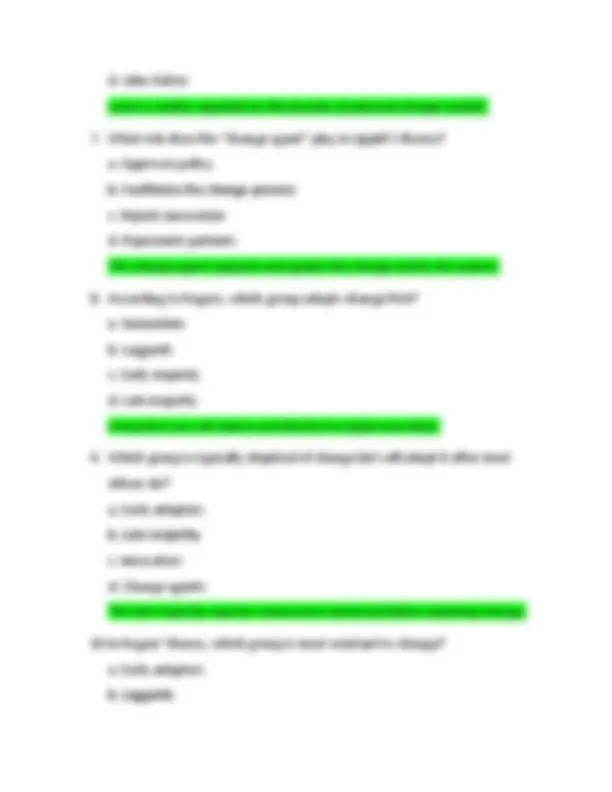
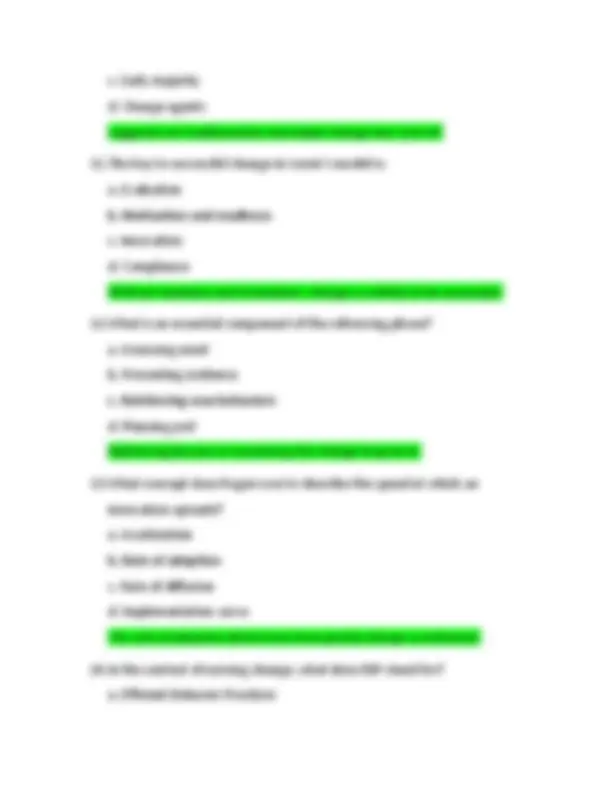
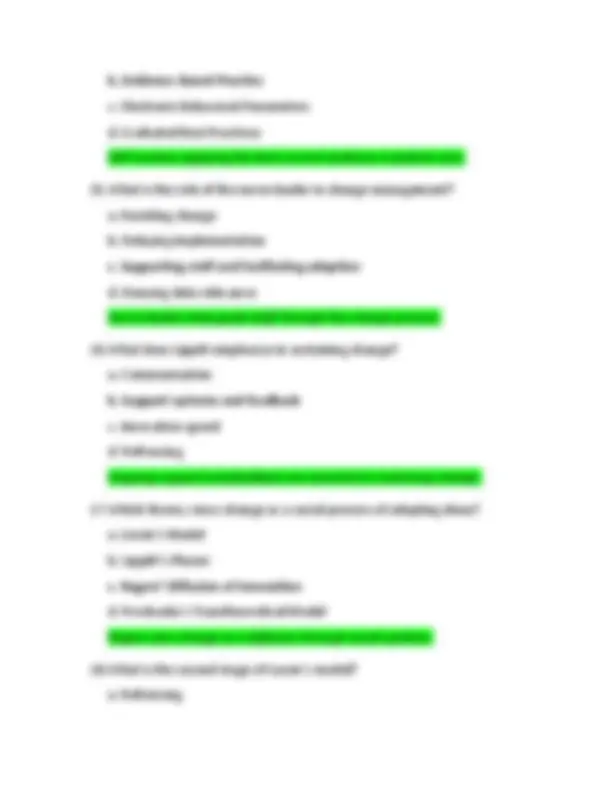
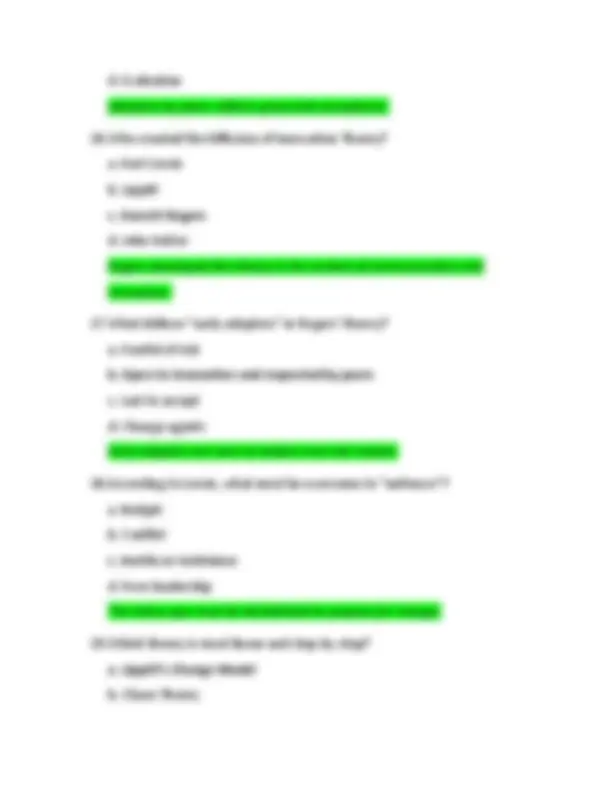

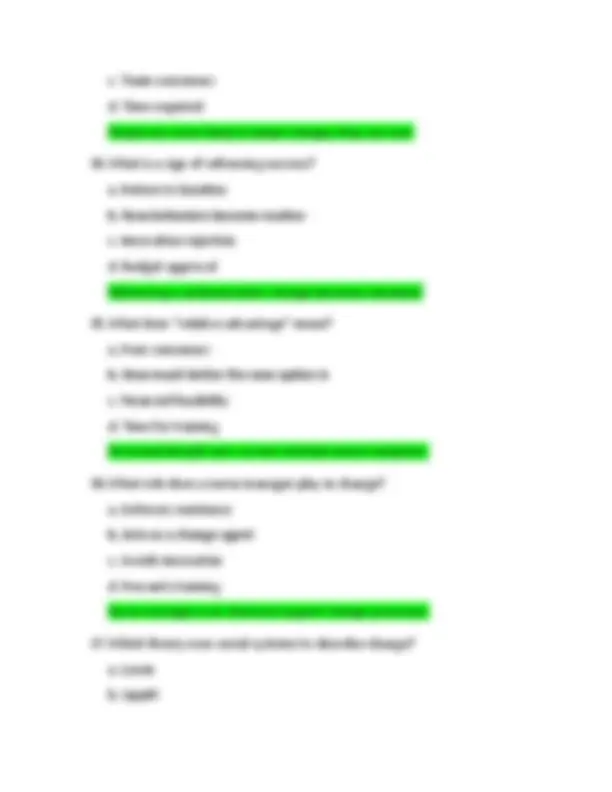
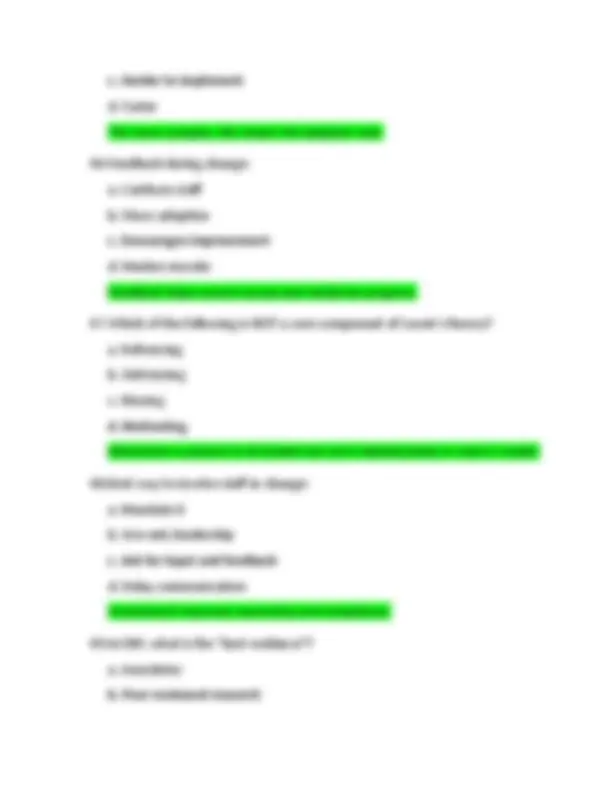
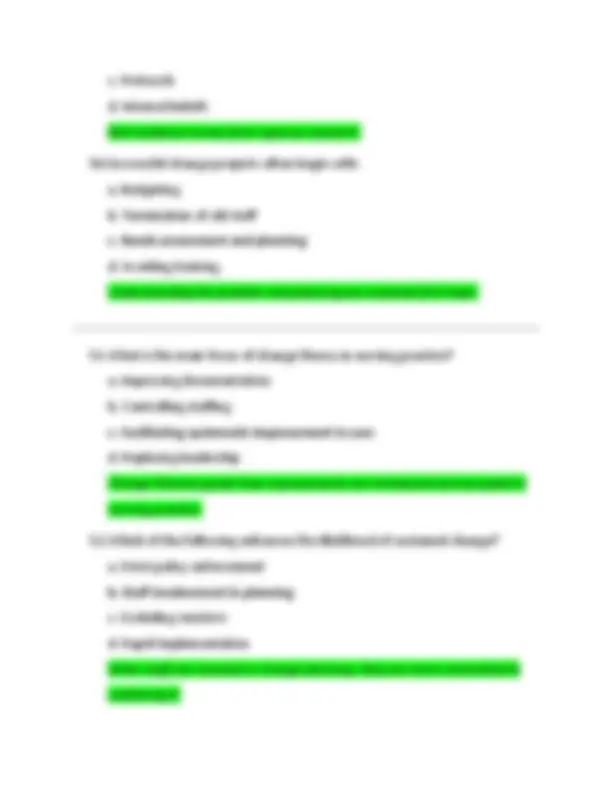
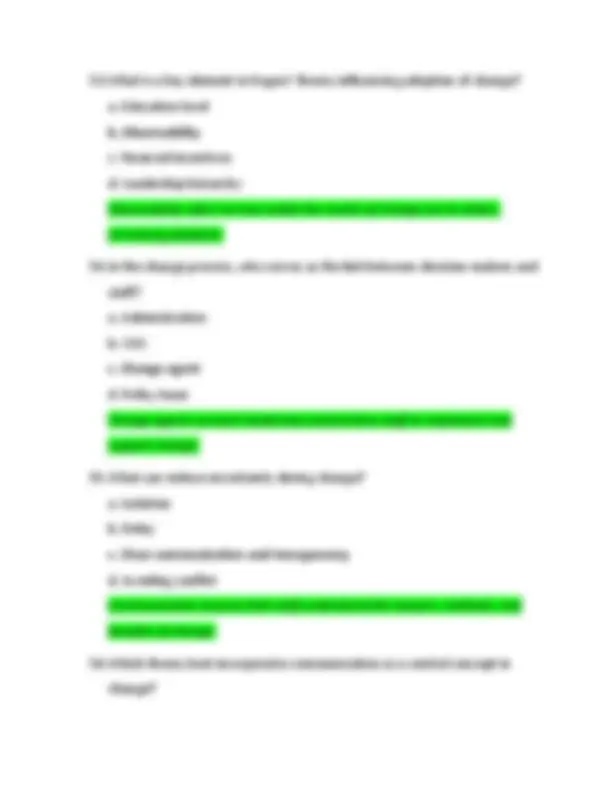
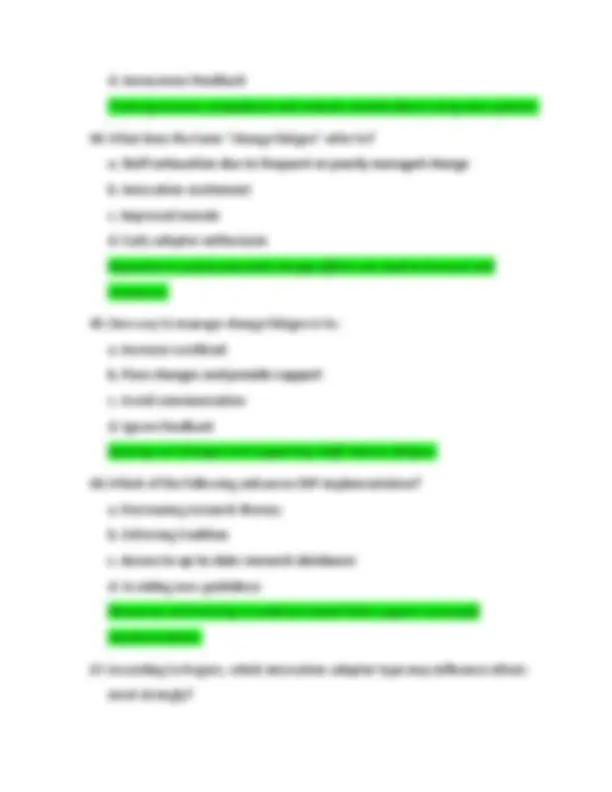
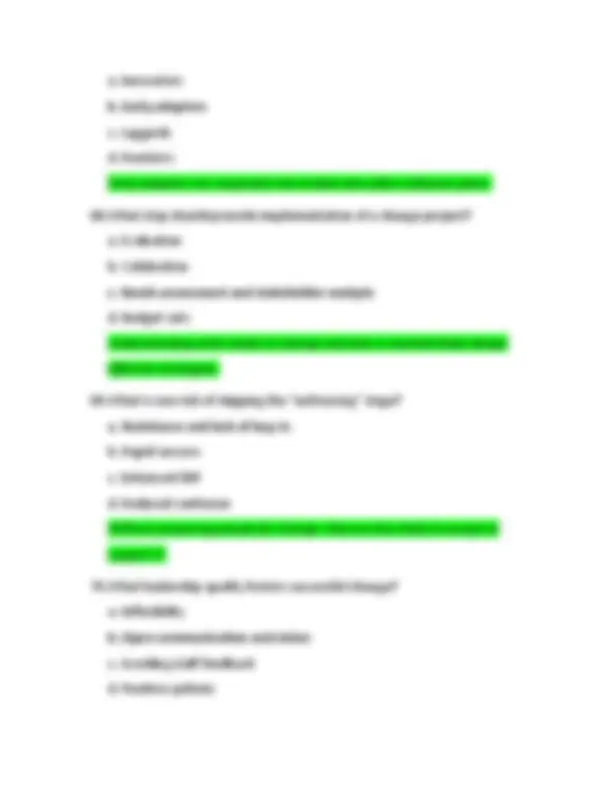
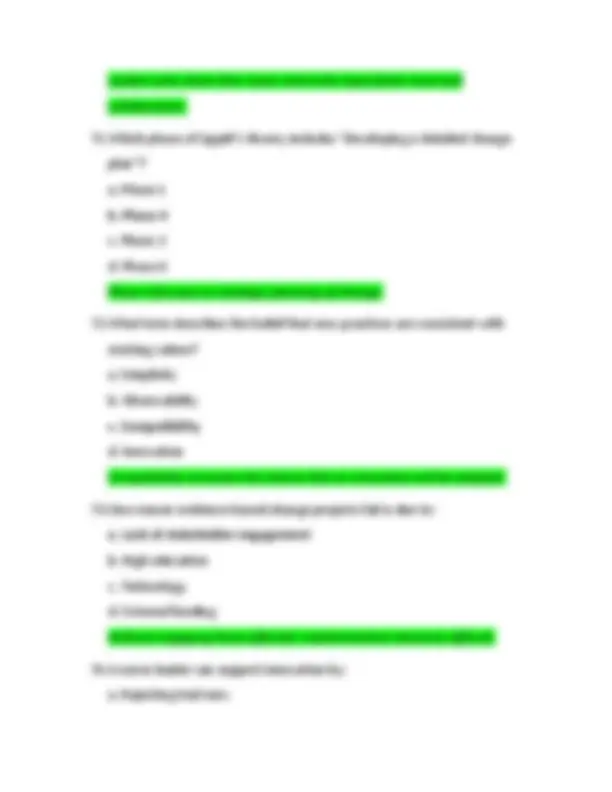
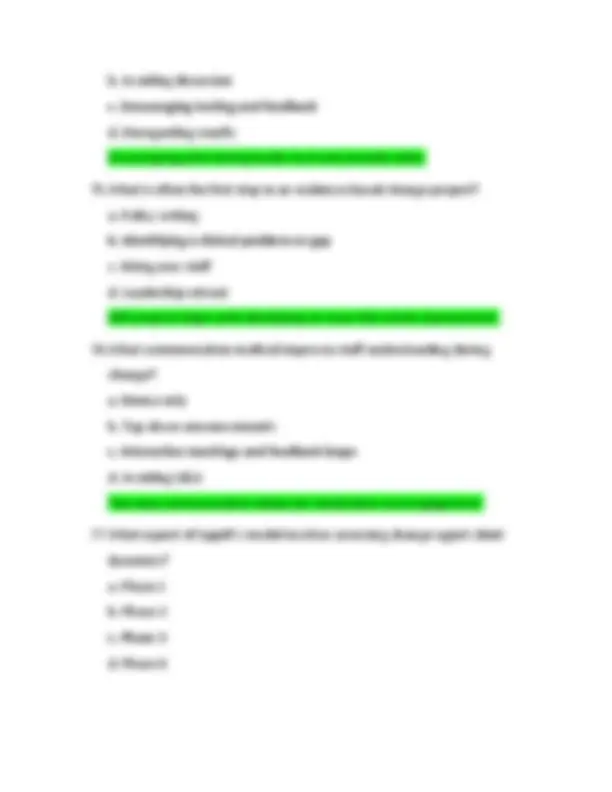
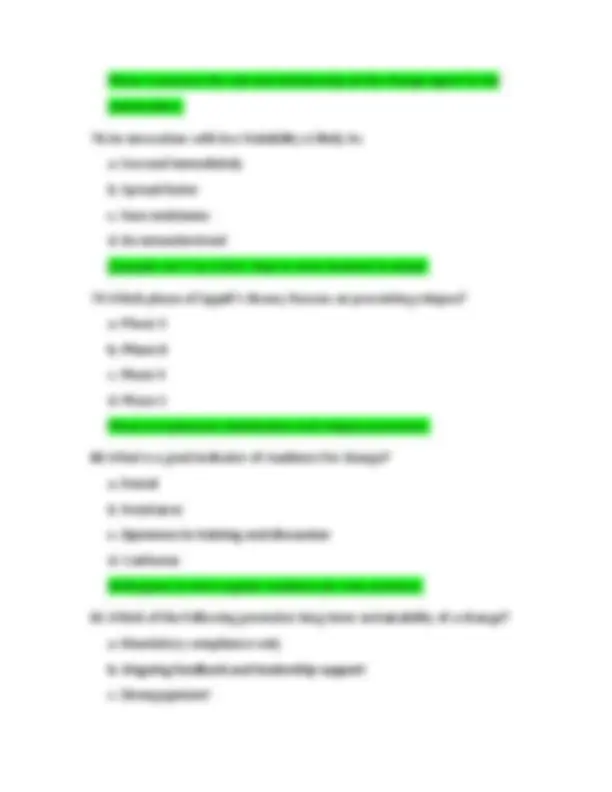
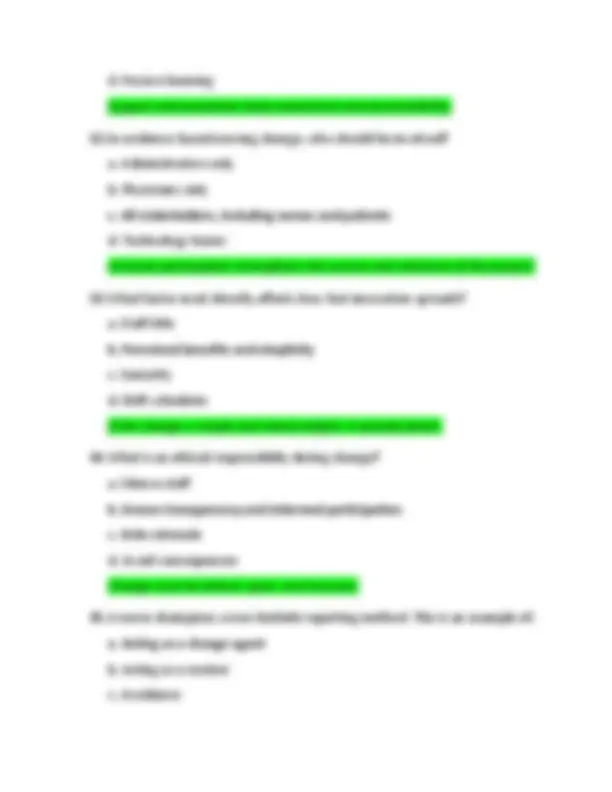
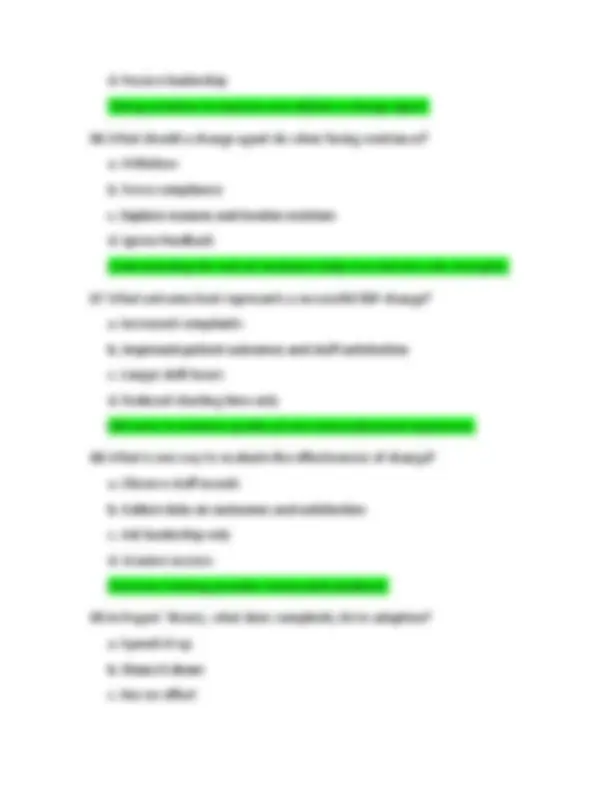
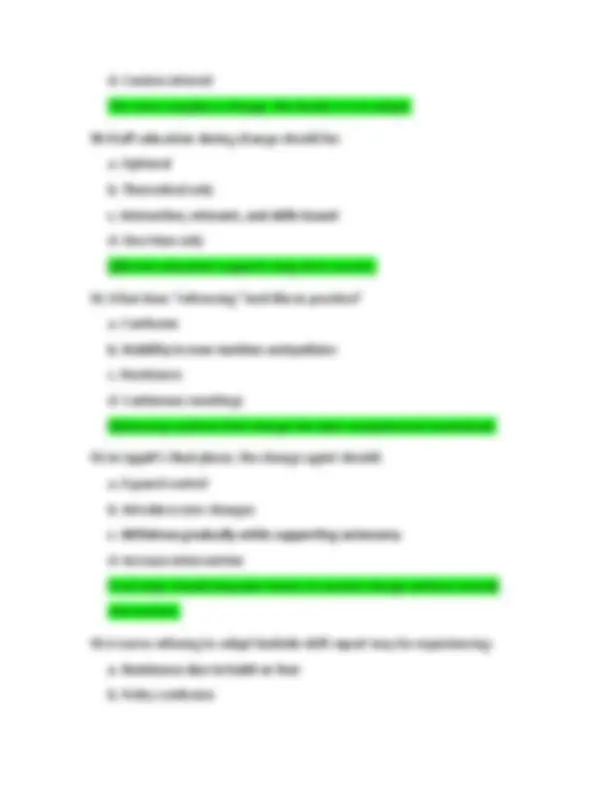
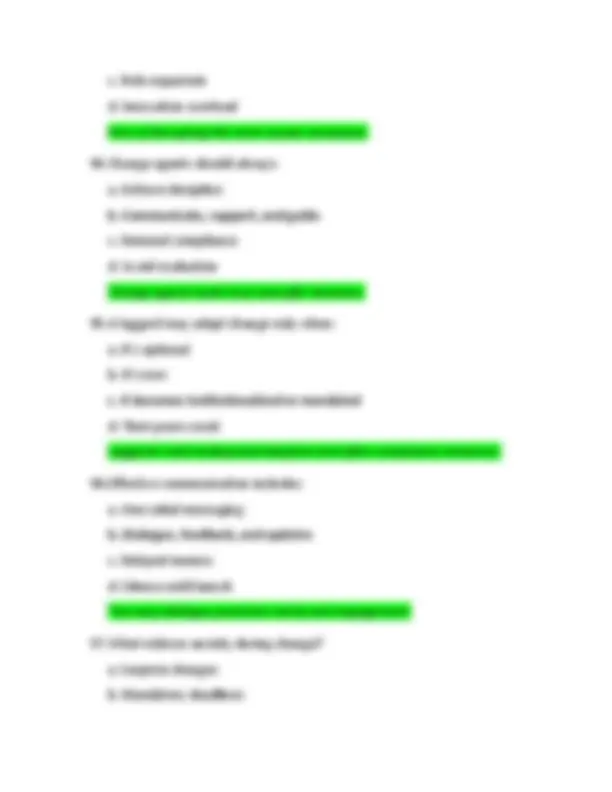
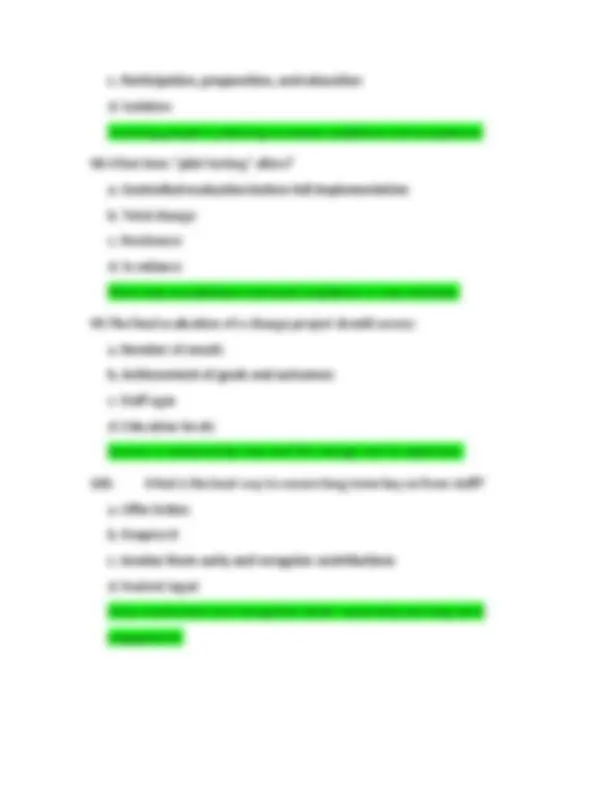


Study with the several resources on Docsity

Earn points by helping other students or get them with a premium plan


Prepare for your exams
Study with the several resources on Docsity

Earn points to download
Earn points by helping other students or get them with a premium plan
Community
Ask the community for help and clear up your study doubts
Discover the best universities in your country according to Docsity users
Free resources
Download our free guides on studying techniques, anxiety management strategies, and thesis advice from Docsity tutors
NUR 4455 / N4455 Module 2: Change Theories Project from the University of Texas at Arlington. The questions cover core concepts from nursing change theories, including Lewin’s Change Theory, Rogers’ Diffusion of Innovation, Lippitt’s Phases, and evidence-based practice application in organizational change
Typology: Exams
1 / 27

This page cannot be seen from the preview
Don't miss anything!




















NUR 4455 / N4455 Module 2: Change Theories Project from the University of Texas at Arlington. The questions cover core concepts from nursing change theories, including Lewin’s Change Theory, Rogers’ Diffusion of Innovation, Lippitt’s Phases, and evidence-based practice application in organizational change.
c. Early majority d. Change agents Laggards are traditionalists and adopt change last, if at all. 11.The key to successful change in Lewin’s model is: a. Evaluation b. Motivation and readiness c. Innovation d. Compliance Without readiness and motivation, change is unlikely to be successful. 12.What is an essential component of the refreezing phase? a. Assessing need b. Presenting evidence c. Reinforcing new behaviors d. Planning exit Refreezing focuses on sustaining the change long-term. 13.What concept does Rogers use to describe the speed at which an innovation spreads? a. Acceleration b. Rate of adoption c. Rate of diffusion d. Implementation curve The rate of adoption determines how quickly change is embraced. 14.In the context of nursing change, what does EBP stand for? a. Efficient Behavior Practices
b. Evidence-Based Practice c. Electronic Behavioral Parameters d. Evaluated Best Practices EBP involves applying the best current evidence in patient care. 15.What is the role of the nurse leader in change management? a. Resisting change b. Delaying implementation c. Supporting staff and facilitating adoption d. Denying data relevance Nurse leaders help guide staff through the change process. 16.What does Lippitt emphasize in sustaining change? a. Communication b. Support systems and feedback c. Innovation speed d. Refreezing Ongoing support and feedback are essential to sustaining change. 17.Which theory views change as a social process of adopting ideas? a. Lewin’s Model b. Lippitt’s Phases c. Rogers’ Diffusion of Innovation d. Prochaska’s Transtheoretical Model Rogers sees change as a diffusion through social systems. 18.What is the second stage of Lewin’s model? a. Refreezing
22.Which factor most influences whether change will be adopted according to Rogers? a. Authority b. Cost c. Perceived advantage d. Timing If a change is seen as clearly better, it is more likely to be adopted. 23.Which step in Lippitt’s model includes communication planning? a. Phase 4 – Planning the change b. Phase 1 – Assessment c. Phase 6 – Stabilization d. Phase 2 – Diagnosis Effective communication is planned in Phase 4. 24.What is a common barrier to change in healthcare settings? a. Leadership b. Resistance to change c. EBP d. Policy clarity Resistance due to fear or lack of trust often blocks change. 25.What is an early sign that change is being accepted? a. Formal announcement b. Managerial resistance c. Peer-to-peer adoption
d. Evaluation Adoption by peers reflects grassroots acceptance. 26.Who created the Diffusion of Innovation Theory? a. Kurt Lewin b. Lippitt c. Everett Rogers d. John Kotter Rogers developed this theory in the context of communication and innovation. 27.What defines “early adopters” in Rogers’ theory? a. Fearful of risk b. Open to innovation and respected by peers c. Last to accept d. Change agents Early adopters are seen as leaders and role models. 28.According to Lewin, what must be overcome to “unfreeze”? a. Budget b. Conflict c. Inertia or resistance d. Poor leadership The status quo must be destabilized to prepare for change. 29.Which theory is most linear and step-by-step? a. Lippitt’s Change Model b. Chaos Theory
c. Team consensus d. Time required People are more likely to adopt changes they can test. 34.What is a sign of refreezing success? a. Return to baseline b. New behaviors become routine c. Innovation rejection d. Budget approval Refreezing is achieved when change becomes standard. 35.What does “relative advantage” mean? a. Peer consensus b. How much better the new option is c. Financial feasibility d. Time for training Perceived benefit over current methods boosts adoption. 36.What role does a nurse manager play in change? a. Enforces resistance b. Acts as a change agent c. Avoids innovation d. Prevents training Nurse managers can lead and support change processes. 37.Which theory uses social systems to describe change? a. Lewin b. Lippitt
c. Rogers d. Senge Rogers emphasized the role of communication within groups. 38.Why is it important to evaluate change? a. To avoid policy b. To punish failure c. To measure effectiveness and make adjustments d. To eliminate staff Evaluation ensures the change achieves desired outcomes. 39.What is a common step before refreezing? a. Communication b. Fear c. Reinforcement d. Budgeting Reinforcing behaviors helps establish long-term stability. 40.What is one strategy to overcome resistance? a. Ignoring concerns b. Involving stakeholders early c. Delay implementation d. Restrict communication Stakeholder involvement increases buy-in and reduces resistance. 41.What makes a change agent effective? a. Power b. Trustworthiness and communication
c. Harder to implement d. Faster The more complex, the slower the adoption rate. 46.Feedback during change: a. Confuses staff b. Slows adoption c. Encourages improvement d. Hinders morale Feedback helps correct course and reinforces progress. 47.Which of the following is NOT a core component of Lewin’s theory? a. Refreezing b. Unfreezing c. Moving d. Motivating Motivation is present in all models but not a labeled phase in Lewin’s model. 48.Best way to involve staff in change: a. Mandate it b. Use only leadership c. Ask for input and feedback d. Delay communication Involvement improves ownership and compliance. 49.In EBP, what is the "best evidence"? a. Anecdotes b. Peer-reviewed research
c. Protocols d. Internal beliefs Best evidence comes from rigorous research. 50.Successful change projects often begin with: a. Budgeting b. Termination of old staff c. Needs assessment and planning d. Avoiding training Understanding the problem and planning are essential first steps. 51.What is the main focus of change theory in nursing practice? a. Improving documentation b. Controlling staffing c. Facilitating systematic improvement in care d. Replacing leadership Change theories guide how improvements are introduced and accepted in nursing practice. 52.Which of the following enhances the likelihood of sustained change? a. Strict policy enforcement b. Staff involvement in planning c. Excluding resistors d. Rapid implementation When staff are involved in change planning, they are more committed to sustaining it.
a. Lewin’s Theory b. Lippitt’s Change Theory c. Change Curve Model d. Stages of Grief Model Lippitt’s model emphasizes communication at every phase of the change process. 57.Which principle of adult learning should be used during change education? a. Punishment for mistakes b. Repetition alone c. Relevance to real-life practice d. Passive listening Adults learn best when content is relevant to their work and experiences. 58.Why is resistance to change common in healthcare? a. Desire for chaos b. Fear of the unknown or loss of control c. Weak policies d. Lack of education People resist when they feel uncertain or threatened by changes to routine. 59.What is a good strategy to convert resistors into change supporters? a. Punishment b. Empowerment and active listening c. Avoidance d. Leadership bypass Empowering resistors by involving them can turn them into advocates.
60.In change projects, what does SMART goal-setting ensure? a. Clear, measurable objectives b. Groupthink c. Strict control d. Delay SMART goals provide direction and a framework for evaluating success. 61.What is an indicator of successful change integration? a. Staff confusion b. Routine incorporation of new behaviors c. Policy resistance d. Project abandonment When new practices become part of the daily routine, change has been successfully integrated. 62.What does Rogers refer to when describing the “early majority”? a. Opposers b. Individuals who adopt after seeing success in others c. First to adopt d. Innovators Early majority individuals are deliberate and adopt change once they see proof of effectiveness. 63.What is often necessary before staff will accept new technology? a. Budget cuts b. Training and demonstration c. Discipline
a. Innovators b. Early adopters c. Laggards d. Resistors Early adopters are respected role models who often influence peers. 68.What step should precede implementation of a change project? a. Evaluation b. Celebration c. Needs assessment and stakeholder analysis d. Budget cuts Understanding what needs to change and who is involved helps design effective strategies. 69.What is one risk of skipping the “unfreezing” stage? a. Resistance and lack of buy-in b. Rapid success c. Enhanced EBP d. Reduced confusion Without preparing people for change, they are less likely to accept or support it. 70.What leadership quality fosters successful change? a. Inflexibility b. Open communication and vision c. Avoiding staff feedback d. Punitive policies
Leaders who share their vision and invite input foster trust and collaboration. 71.Which phase of Lippitt’s theory includes “developing a detailed change plan”? a. Phase 1 b. Phase 4 c. Phase 2 d. Phase 6 Phase 4 focuses on strategic planning of change. 72.What term describes the belief that new practices are consistent with existing values? a. Simplicity b. Observability c. Compatibility d. Innovation Compatibility increases the chance that an innovation will be adopted. 73.One reason evidence-based change projects fail is due to: a. Lack of stakeholder engagement b. High education c. Technology d. External funding Without engaging those affected, implementation becomes difficult. 74.A nurse leader can support innovation by: a. Rejecting trial runs